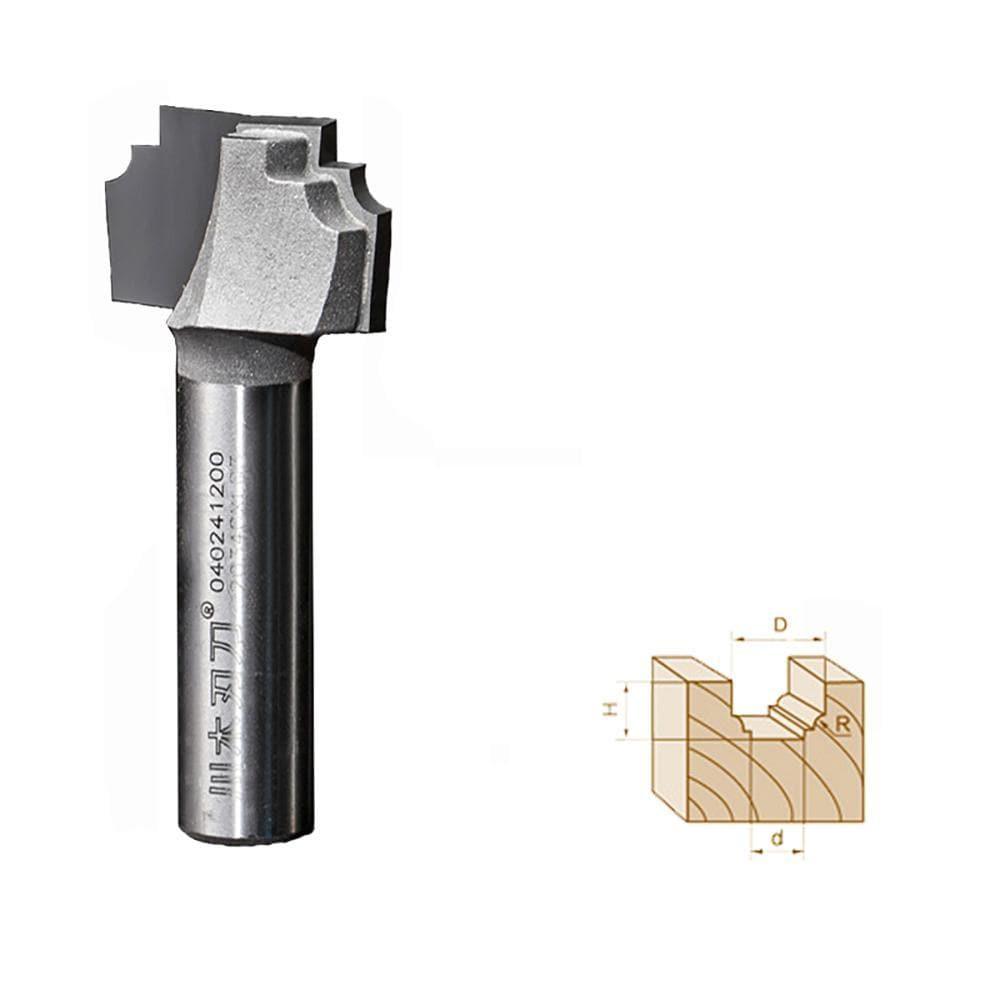A classical plunge router bit , also known as a straight bit or straight flute bit, is a versatile and commonly used tool in woodworking. It is designed to create precise, straight cuts in a variety of materials, including wood, plastic, and even certain metals. In this detailed explanation, we will explore the construction, features, applications, and safety considerations associated with classical plunge router bits.
Construction:
A classical plunge router bit typically consists of a cylindrical shank, a cutting edge, and sometimes a bearing guide. The shank is the part of the bit that is inserted into the collet of a router. It is usually made of hardened steel and comes in different sizes to fit different router models. The cutting edge, located at the bottom of the bit, is the part that actually removes material from the workpiece. It is often made of tungsten carbide, a hard and durable material that can withstand the high-speed rotation of the router. The cutting edge can have different configurations, such as a single straight flute or multiple flutes, depending on the specific cutting requirements. Some classical plunge router bits also have a bearing guide, which is a small wheel located above the cutting edge. The bearing guide helps to stabilize the bit and allows it to follow a template or an edge, creating consistent and accurate cuts.
Features:
Classical plunge router bits come in a variety of sizes and diameters to accommodate different cutting needs. Common sizes range from 1/8 inch to 1 inch or more. The diameter of the cutting edge determines the width of the cut produced by the bit. It is important to select the appropriate bit size based on the desired cut width and the capabilities of your router.
Applications:
The versatility of classical plunge router bits makes them suitable for a wide range of woodworking applications. They are commonly used for creating grooves, dadoes, rabbets, and slots in wood. These bits can also be used for edge profiling, flush trimming, and even joinery tasks such as making mortises. By adjusting the cutting depth and using the bearing guide, you can achieve different types of cuts, including straight cuts, stopped cuts, and cuts following a specific pattern or template. Classical plunge router bits are often employed in cabinetry, furniture making, and general woodworking projects.
Safety Considerations:
When using a classical plunge router bit , safety should always be a top priority. Here are some important safety considerations to keep in mind:
1. Eye protection: Always wear safety goggles or a face shield to protect your eyes from flying debris.
2. Workpiece stability: Ensure that the workpiece is securely clamped or held in place to prevent it from moving during the routing process.
3. outer stability: Make sure the router is securely held and stable to prevent it from tipping or shifting during operation. If using a handheld router, maintain a firm grip and use both hands to control it.
4. Router speed: Set the router to an appropriate speed for the material being cut. Higher speeds are generally used for softer materials, while lower speeds are suitable for harder materials.
5. Cutting depth: Adjust the cutting depth of the router bit to the desired level. Avoid setting the cutting depth too deep, as it can increase the risk of kickback or cause excessive strain on the router.
6. Multiple passes: If you need to remove a significant amount of material, make multiple passes with gradually increasing depth rather than attempting to cut it all in one pass. This helps to maintain control and prevents overloading the router.
7. Routing direction: Always move the router against the rotation of the bit. This ensures that the cutting edge engages the material properly and minimizes the risk of the router getting away from you.
8. Dust extraction: Use a dust collection system or wear a dust mask to minimize exposure to wood dust, which can be harmful when inhaled.
It is crucial to thoroughly read and understand the manufacturer's instructions and guidelines for both the router and the router bit before using them. Following these safety measures will help ensure a safe and successful routing experience.
In conclusion, classical plunge router bits are valuable tools for achieving precise and clean cuts in woodworking projects. Their straight cutting edges and plunge capabilities make them versatile and suitable for a wide range of applications. By understanding their construction, features, applications, and safety considerations, you can confidently and effectively use classical plunge router bits to enhance your woodworking skills.
